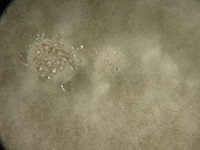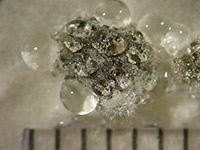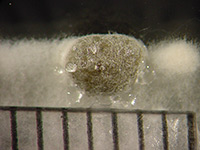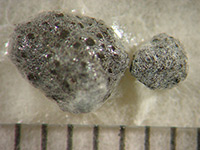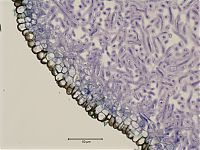Sclerotial Development
Sclerotia are quiescent, multicellular aggregates of vegetative hyphae that function in long-term survival and reproduction. After sufficient vegetative growth, sclerotia development can be initiated by a number of environmental factors including physical and chemical barriers, low pH, oxidative stress, hyphal damage and low pH. In culture plates inoculated from the center, they are most commonly observed forming in a ring near or at the edge of the plate.
Three distinct tissue layers are observed in mature sclerotia. The outer most rind layer is composed of a continuous layer of melanized hyphal tips. To the interior is a thin cortex layer composed of pseudo parynchamous cells that quickly transititions into the medulla composed of longer unbranched hyphae. The medulla makes up the bulk of the sclerotial volume.
Sclerotia are highly resistant to physical and microbial degradation and can survival in the soil and among plant debris for many years. Under appropriate environmental conditions, sclerotia germinate mycelliogenically and grow as vegetative hyphae or carpogenically by producing a stipitate apothecium containing millions of ascospores that are forcibly discharged into the environment.
Updated 15 December 2009 by Jeffrey Rollins.
Videos
Quicktime 7 302KB
Time lapse movie of S. sclerotiurum growing on a potato dextrose agar plate. Hyphae grow from the center point of inoculum and completely colonize the plate. Aerial hyphae proliferates and then aggregates of hyphae form near the outer edge of the plate. These aggregates grow in size, condense and become mealinzed to form mature sclerotia. Still images were captured every 2 hours for 10 days to create this time lapse series.
Pictures
Commenting is closed for this article.


